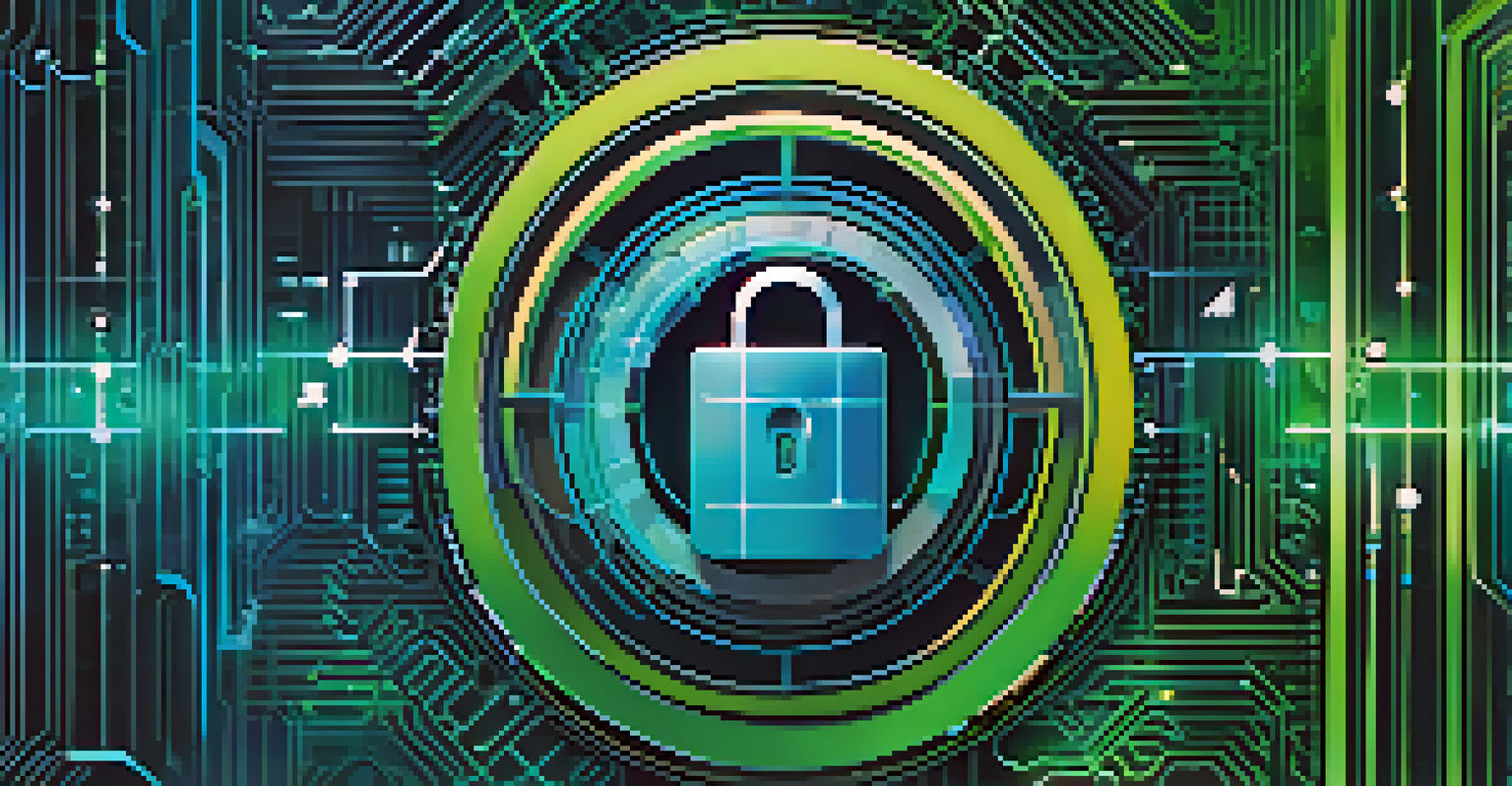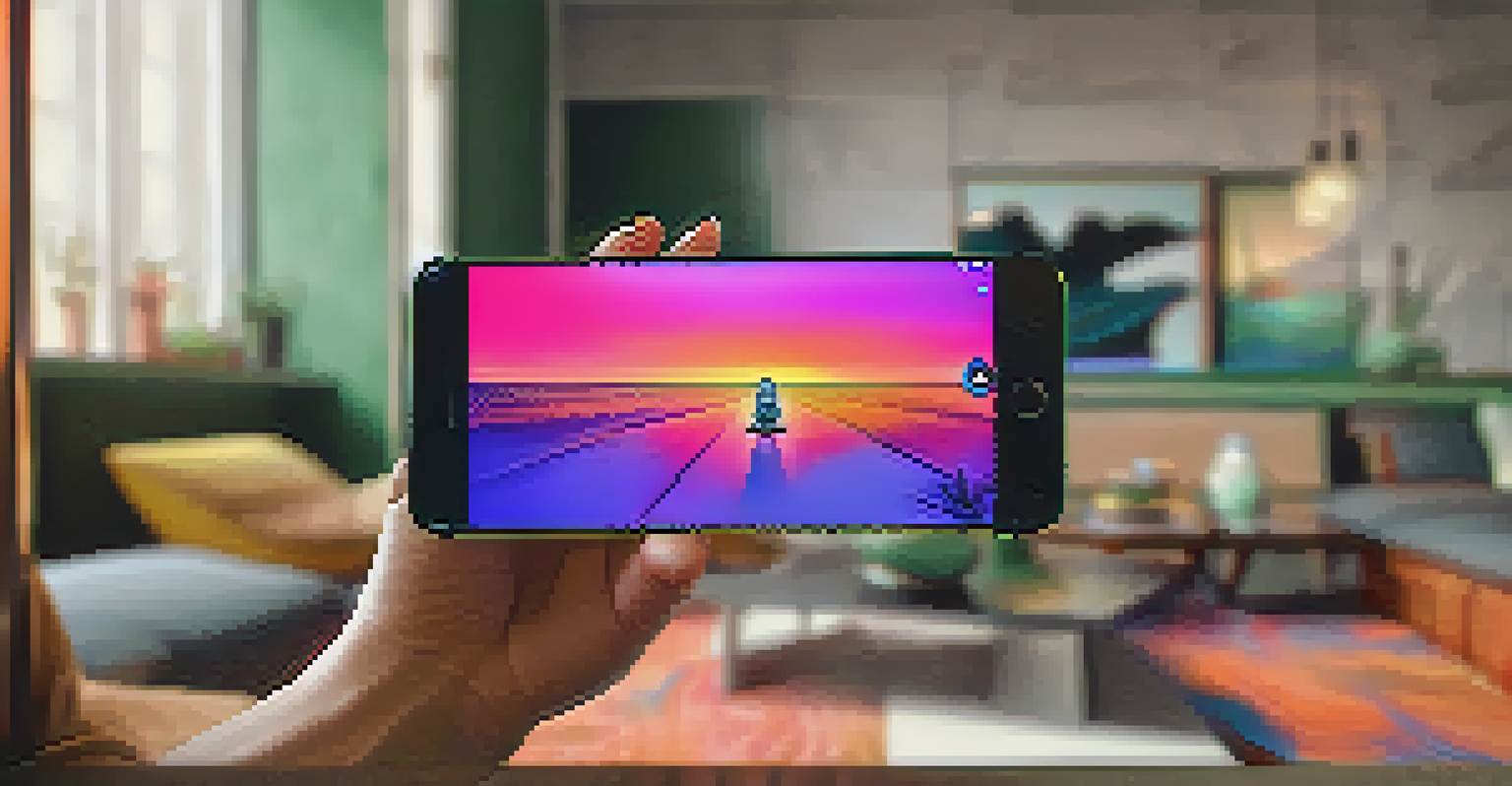Digital Rights Management: The Future with NFTs Explained

Understanding Digital Rights Management (DRM) Basics
Digital Rights Management, or DRM, involves technologies used to control how digital content is used and distributed. Think of it as a digital lock that prevents unauthorized access or use of creative works. This is especially crucial in industries like music, film, and publishing, where creators aim to protect their intellectual property.
The digital revolution has made it easier to create and distribute content, but it has also made it much harder to protect the rights of creators.
Historically, DRM has faced criticism for being too restrictive, often frustrating legitimate users while trying to curb piracy. For example, some streaming services limit downloads to specific devices, making it harder for users to enjoy content freely. This balance of protecting rights while allowing ease of access is a constant challenge for content creators.
As technology evolves, so does the conversation around DRM. The rise of blockchain and NFTs presents new opportunities and challenges, suggesting that a shift in how we think about digital rights may be on the horizon.
What Are NFTs and How Do They Work?
NFTs, or Non-Fungible Tokens, are unique digital assets verified using blockchain technology. Unlike cryptocurrencies such as Bitcoin, which are interchangeable, NFTs represent ownership of a specific item or piece of content—think of them as digital collectibles. This uniqueness is what makes NFTs particularly appealing for artists and creators.

When someone buys an NFT, they are essentially purchasing a digital certificate of ownership for a specific piece of content, whether it's art, music, or even tweets. This ownership is recorded on the blockchain, making it transparent and immutable. For creators, this means they can sell their work directly to buyers without intermediaries, potentially earning more.
DRM Controls Digital Content Usage
Digital Rights Management (DRM) serves as a protective measure to control the use and distribution of creative works in the digital space.
However, it's essential to understand that owning an NFT doesn't always mean owning the copyright to the content. Buyers often receive limited rights, which can vary by the creator’s stipulations. This nuance is crucial for anyone venturing into the world of NFTs.
The Intersection of DRM and NFTs
As NFTs gain traction, they present a new model for digital rights management. Instead of traditional DRM methods, which can be cumbersome, NFTs offer a decentralized way for creators to manage their rights. This transition could simplify the process of proving ownership and transferring rights in the digital landscape.
NFTs represent a new way for artists to monetize their work and take control of their intellectual property in a digital age.
For instance, an artist can mint an NFT for their artwork that includes specific terms about how the piece can be used. This could range from allowing certain types of reproduction to restricting it entirely. Such flexibility allows creators to maintain control over their work in ways that traditional DRM often fails to achieve.
This merging of NFT technology with DRM opens up exciting possibilities but also raises questions about enforcement and standardization. As this space evolves, finding a balance between creator rights and consumer access will be vital.
Benefits of NFTs for Creators and Consumers
NFTs offer numerous benefits for creators, including direct sales and potentially higher profits. They can bypass traditional distribution channels and retain a larger share of their earnings. Additionally, smart contracts can ensure that creators receive royalties every time their NFT is resold, providing a continuous revenue stream.
For consumers, owning an NFT can be a way to support artists while also gaining exclusive access to content and experiences. Imagine owning a piece of digital art that not only appreciates in value but also grants you access to special events or future works. This added layer of interaction enhances the value of ownership beyond mere possession.
NFTs Redefine Ownership and Rights
Non-Fungible Tokens (NFTs) provide a new model for ownership, allowing creators to sell unique digital assets directly to consumers while retaining specific rights.
However, the NFT market is still in its infancy, and consumers must do their due diligence. Understanding the terms associated with each NFT and what rights are granted is crucial to ensuring a satisfying ownership experience.
Potential Challenges and Criticisms of NFTs
Despite the promise of NFTs, they are not without challenges. One major concern is the environmental impact of blockchain technology, particularly in the energy-intensive processes used by some networks. This has led to criticism from environmentalists and calls for more sustainable practices in the NFT space.
Additionally, the current NFT market is rife with speculation and volatility. Prices can fluctuate wildly, leading to risks for both creators and buyers. This unpredictability can deter some artists from fully embracing the technology, fearing that their work may not receive the value it deserves.
Moreover, issues of copyright infringement have surfaced, with individuals minting NFTs of works they do not own. This highlights the need for better governance and education within the NFT ecosystem to protect artists and their rights.
The Future of Digital Rights Management with NFTs
Looking ahead, the integration of NFTs into digital rights management could revolutionize how we think about ownership and distribution. As more creators explore this technology, we may see innovative models emerge that prioritize both artist rights and consumer access. This could lead to a more equitable digital landscape for everyone involved.
With the potential for enhanced transparency and flexibility, NFTs might just change the game for digital content. Enabling creators to retain greater control over their work while ensuring that consumers feel empowered could redefine the relationship between artists and their audiences.
Balancing Creator Rights and Access
The integration of NFTs into DRM highlights the ongoing challenge of balancing the rights of creators with the need for consumer access to digital content.
As this space continues to evolve, it will be crucial for stakeholders to keep an open dialogue about rights, responsibilities, and ethical considerations. The future of DRM with NFTs holds great promise, but it will require thoughtful navigation to ensure a balance that benefits all.
Conclusion: Embracing Change in Digital Rights Management
In conclusion, the intersection of digital rights management and NFTs represents a significant shift in how we understand ownership in the digital realm. As artists and consumers alike begin to explore this new frontier, it’s essential to approach it with curiosity and a willingness to adapt. Embracing these changes could lead to a more sustainable and equitable creative ecosystem.
While there are challenges to address, the benefits of NFTs offer exciting possibilities for creators to reclaim control over their work. As the technology matures, so too will the frameworks that support it, creating a more transparent and accessible system for all.

Ultimately, the future of digital rights management with NFTs invites us to rethink traditional paradigms and consider how we can create a more inclusive environment for creativity in the digital age.